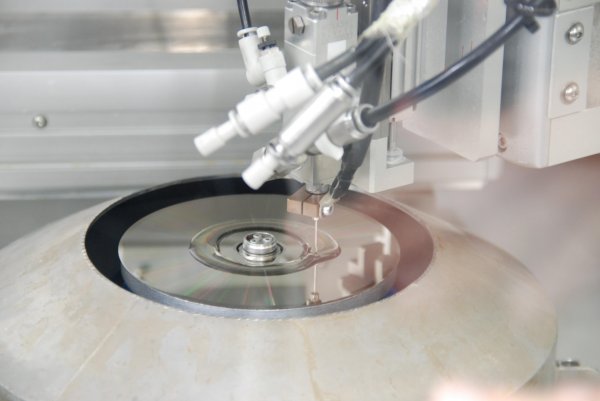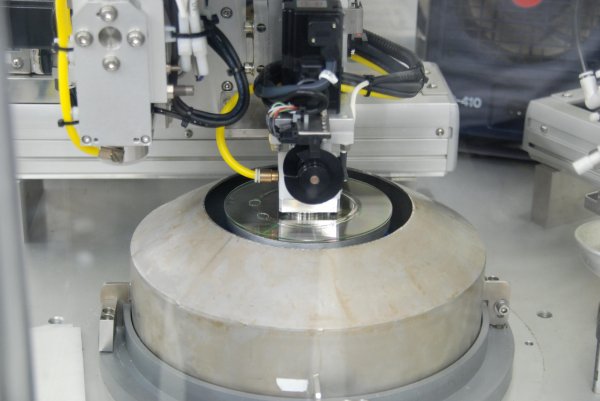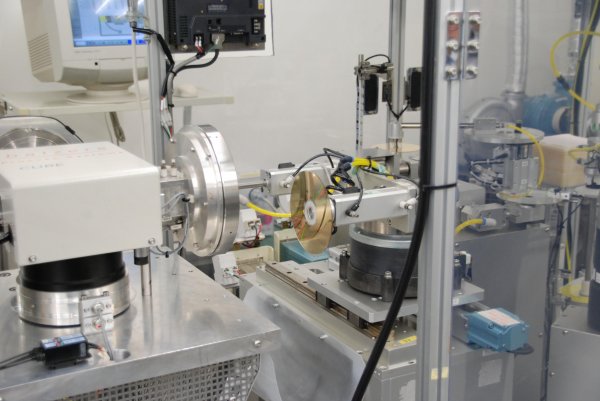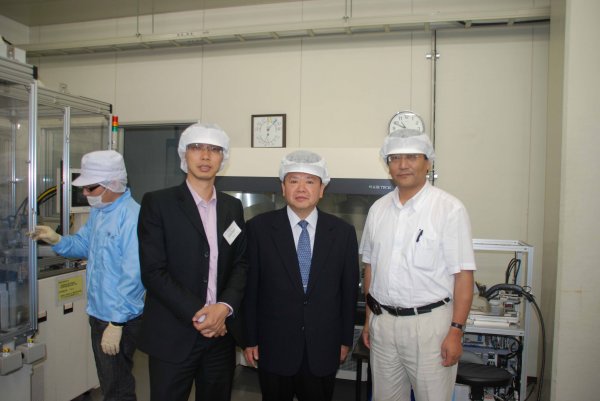@Myles: That does not jive with my memory of the early digital recording process but whatever. The big limitations were the ADCs, then the DACs...
Regarding the plots, where is the signal being probed? Output of the optical receiver (doubtful, too clean), after the detector and EQ, ??? Are they claiming the large amplitude increase is due to the better CD construction? The eye diagrams are not normal single- or two-UI spans so it is hard to see what to get out of them. From what I can tell looking at fuzzy captures on my notebook there is very little difference in the eye patterns (save the amplitude).
edit: Tom jumped in ahead of me, slow typer...
The plotted diagram is used more likely to visualize the result of good sounding from a Crystal Disc.
When you look at the manufacturing process, it is totally different from making a Crystal Disc than a conventional CD. A conventional CD (CD) is just like a plastic cup which is pressed thru a injection molding process in a molding machine while the Crystal Disc (Crystal) is made thru the Photo Polymerization process (2P process). The process of making Crystal is far more complicated than of CD.
Pressing a conventional CD:
- require High Temperature, High Pressure to inject the poly-carbonate
- then cool down the CD instantly
--> resulting in
- quick change of temperature makes the shape of digital pit not perfect
- poly-carbonate cannot fill up the digital pit of the metal stamper even under extremely high pressure
Making a Crystal Disc
- Glass plate from glass factory must be refined manually in Memory-Tech
- undergo the Photo Polymerization process which forms the data layer
~ apply special kind of liquid polymer on the metal stamper and the glass
~ because the liquid polymer is fluid, it fills up the digital pits of the metal stamper easily and perfectly
~ under the exposure of ultra-light, the polymer becomes hard and forms perfect data layer with perfect digital pits.
- then 24K gold plating process to produce the reflective layer
--> resulting in
- use of refined glass substrate can almost eilminate the bi-refringence effect
- when no change of temperature occurs, perfect shape of pits are formed
- Glass substrate is hardly influenced by the variation of temperature and humidity
----> After all, Crystal Disc can provide much better and accurate digital data being read and produce much less jitter.
----> the maximum capacity of a Crystal Disc production in Memory-Tech is only 70 discs each day.
The liquid polymer is being applied on the metal stamper:

The glass substrate was placed onto the metal stamper and ready to be spun in high speed:

After 24K Gold plating process:

From left: Me, father of HQCD & Crystal Disc, Representative from Memory-Tech in China

Last edited:

